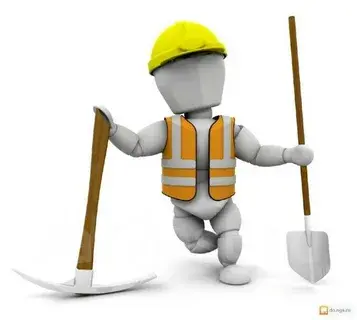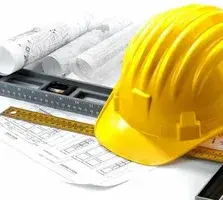Essential Plumbing Tips for Construction Projects
- Link Builder

- Dec 11, 2024
- 6 min read
Plumbing is one of the most critical aspects of any construction project, whether it’s residential, commercial, or industrial. It ensures the safety, functionality, and comfort of the occupants. While the aesthetics and structural integrity of a building often take center stage, plumbing plays a vital role in supporting all the necessary water and waste systems. For construction professionals, builders, and homeowners, understanding the basics of plumbing in construction is essential for ensuring a smooth, efficient, and safe project.
In this article, we’ll walk you through the most important plumbing considerations during construction, from material selection and installation to compliance with local codes and regulations. Whether you’re overseeing a construction site or doing a DIY renovation, these plumbing tips will help you avoid common mistakes and ensure that your plumbing system operates flawlessly for years to come.
1. Understand the Importance of Plumbing in Construction
Before diving into the specifics, it’s important to appreciate why plumbing is so crucial in construction. Plumbing systems are responsible for delivering clean water into a building for consumption, bathing, and cleaning, as well as managing wastewater through drainage systems. A well-designed plumbing system ensures that there is no contamination, no leaks, and no risk of damage to the property.
Construction projects require different types of plumbing systems depending on the size and function of the building. For example, residential plumbing is generally less complex than commercial plumbing, but it still requires careful planning and installation. For large-scale industrial projects, you may need to factor in specialized plumbing systems that support high volumes of water and complex waste management needs.
2. Selecting the Right Plumbing Materials
One of the most critical decisions when planning plumbing for any construction project is selecting the right materials. The wrong choice can lead to costly repairs and maintenance, leaks, or failures down the line.
Common Plumbing Materials:
Copper Pipes: Copper has been a popular choice for plumbing due to its strength, resistance to corrosion, and long lifespan. However, copper pipes are more expensive compared to other materials and can be more difficult to install.
PVC (Polyvinyl Chloride) Pipes: PVC pipes are lightweight, affordable, and easy to work with, making them a top choice for both residential and commercial plumbing. However, they’re best suited for cold-water applications as they can become brittle when exposed to high heat.
PEX (Cross-Linked Polyethylene): PEX has become increasingly popular due to its flexibility, ease of installation, and resistance to freezing. PEX is often used for residential plumbing, particularly in water supply lines.
Galvanized Steel: Though commonly used in older homes, galvanized steel has fallen out of favor due to its tendency to corrode over time, leading to poor water flow and leaks. It’s no longer commonly used in modern construction.
Choosing the right material often depends on your specific project needs. For instance, copper is ideal for areas requiring longevity and resistance to corrosion, while PEX may be a better choice for areas where flexibility is crucial, such as tight spaces or curved paths.
3. Designing the Plumbing System
Proper plumbing design is essential for the smooth operation of a construction project. Poor planning can lead to unnecessary costs, delays, and safety hazards. Here are some key points to consider during the design phase:
Water Supply Lines: Ensure that the water supply lines are designed to provide adequate water pressure to all fixtures. Poor design can result in weak water flow, which can be frustrating for the occupants and lead to operational issues.
Drainage Systems: A properly designed drainage system is essential to ensure wastewater is removed efficiently and doesn’t cause backups or overflows. Pay special attention to the slope of pipes to ensure proper flow. Plumbing codes often require specific angles to ensure efficient drainage.
Ventilation: Plumbing systems require proper ventilation to prevent the build-up of harmful gases like methane. Vents are designed to allow air to enter the drainage system and help wastewater flow smoothly.
Fixture Placement: When designing the layout, consider the location of fixtures such as sinks, toilets, and showers. Grouping plumbing fixtures together will reduce the need for extensive piping, which can help save money on materials and labor.
4. Complying with Plumbing Codes and Regulations
In any construction project, it is essential to comply with local building codes and plumbing regulations. These codes are put in place to ensure safety, health, and efficiency, and non-compliance can result in fines, delays, or the need for costly rework.
Local plumbing codes vary by jurisdiction, so it’s important to check with local authorities or consult with a licensed plumber to ensure that your construction project meets all requirements. Here are some common plumbing code considerations:
Pipe Sizing: Plumbing codes specify the minimum size for pipes based on the water demand and the number of fixtures. Using undersized pipes can lead to water pressure issues and inefficiency.
Materials: Some regions may have specific requirements for the types of materials that can be used for plumbing systems. Make sure to check local guidelines to ensure you're selecting materials that meet code standards.
Backflow Prevention: Plumbing codes require backflow prevention devices to protect the potable water supply from contamination. These devices ensure that water flows only in one direction, preventing wastewater from entering clean water lines.
Hot Water Systems: Codes often include guidelines for the installation of water heaters, including their location, capacity, and safety measures.
Hiring a licensed plumber or working with an experienced contractor can help ensure that your plumbing system is compliant with all relevant codes.
5. Installation Tips for a Successful Plumbing System
Once the design is finalized and the materials are selected, the next step is installation. While plumbing installation may seem straightforward, it’s critical to get it right to avoid issues down the road. Here are a few installation tips to help:
Proper Slope for Drainage: When installing drainage pipes, make sure the pipes are installed with the correct slope (typically ¼ inch per foot). This ensures gravity can effectively move wastewater out of the system.
Secure Pipe Supports: Pipes need to be securely fastened to avoid movement, which can lead to leaks, damage, or pressure issues. Ensure pipes are anchored properly with the appropriate brackets or straps.
Avoid Cutting Corners: When it comes to plumbing installation, it’s important not to cut corners to save time or money. Skipping steps like ensuring pipe fittings are tightly sealed or using low-quality materials can lead to costly problems later.
Test the System: After installation, always test the plumbing system for leaks and water pressure before finalizing the project. Performing this test early in the process can save you from making significant repairs once walls are sealed and finishes are applied.
6. Avoiding Common Plumbing Mistakes
There are several common mistakes that builders and contractors make when working on plumbing systems. Here are a few to watch out for:
Incorrect Pipe Sizing: As mentioned earlier, incorrect pipe sizing can lead to problems with water pressure and drainage. Always ensure that your pipes are sized according to local codes and the water demand of your building.
Inadequate Venting: Proper venting is critical to maintaining the efficiency of your plumbing system. Poor venting can cause slow drainage, foul odors, and even create pressure imbalances.
Not Using the Right Fittings: Using the wrong fittings can lead to leaks or system failures. Always use fittings that are compatible with the type of pipe you are installing.
Ignoring Local Codes: Failing to comply with local plumbing codes can result in costly fines, rework, or even delays in your project. Always consult with professionals to ensure your project meets the required standards.
Conclusion
Plumbing is a vital aspect of any construction project, and careful planning, design, and installation are key to ensuring its success. By selecting the right materials, designing an efficient system, complying with local codes, and avoiding common mistakes, you can avoid costly errors and ensure that your plumbing system works efficiently for years to come. Whether you’re building a new home, renovating an office, or working on a large-scale commercial project, these plumbing tips will guide you to success, saving both time and money in the long run.
In the end, a well-executed plumbing system not only enhances the comfort and functionality of a building but also increases its value and longevity. By following these plumbing best practices, you’ll be setting your construction project up for lasting success.



Comentarios